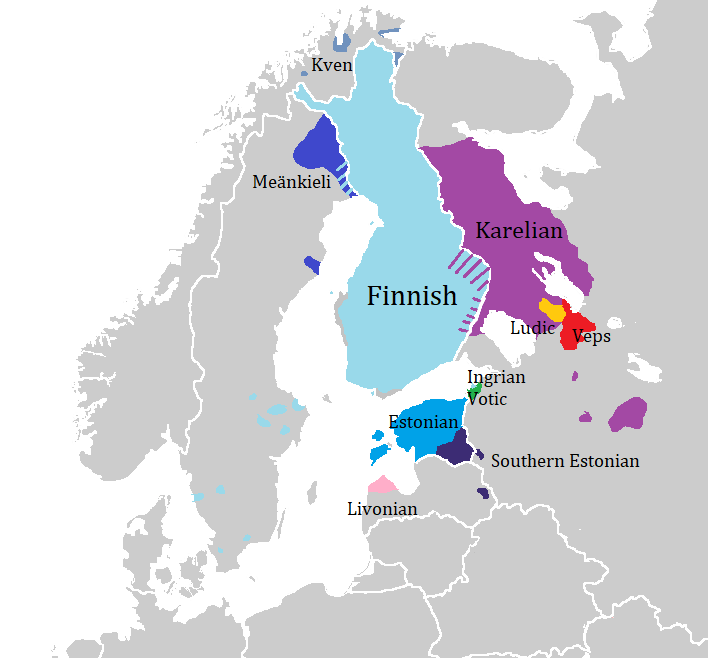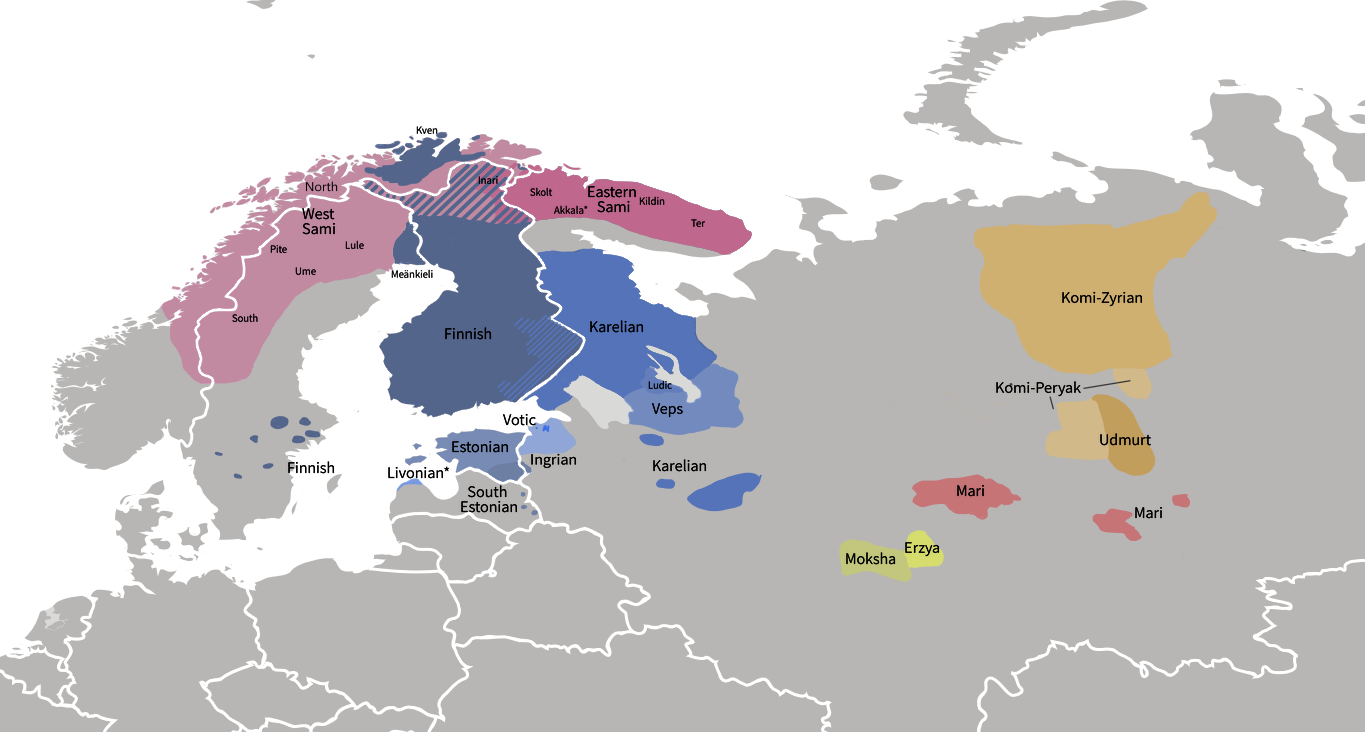|
Finnic Languages (other)
The Finnic or Fennic languages may be: * Baltic-Finnic languages, the ones most commonly called 'Finnic' in Scandinavia and the West * Finno-Permic languages, a hypothetical major branch of the Uralic languages * Finno-Volgaic languages, an obsolete hypothetical branch of the Uralic languages * All the languages in the groupings above; this is common usage in Russia where the non-Baltic Finnic languages are spoken See also *Finnic peoples The Finnic or Fennic peoples, sometimes simply called Finns, are the nations who speak languages traditionally classified in the Finnic (now commonly ''Finno-Permic'') language family, and which are thought to have originated in the region of ... * Uralic languages#Classification {{disambig Finnic peoples ... [...More Info...] [...Related Items...] OR: [Wikipedia] [Google] [Baidu] |
Baltic-Finnic Languages
The Finnic (''Fennic'') or more precisely Balto-Finnic (Balto-Fennic, Baltic Finnic, Baltic Fennic) languages constitute a branch of the Uralic language family spoken around the Baltic Sea by the Baltic Finnic peoples. There are around 7 million speakers, who live mainly in Finland and Estonia. Traditionally, eight Finnic languages have been recognized. The major modern representatives of the family are Finnish and Estonian, the official languages of their respective nation states.Finnic Peoples at The other Finnic languages in the Baltic Sea region are I ... [...More Info...] [...Related Items...] OR: [Wikipedia] [Google] [Baidu] |
Finno-Permic Languages
The Finno-Permic (''Fenno-Permic'') or Finno-Permian (''Fenno-Permian'') languages, or sometimes just Finnic (''Fennic'') languages, are a proposed subdivision of the Uralic languages which comprise the Balto-Finnic languages, Sami languages, Mordvinic languages, Mari language, Permic languages and likely a number of extinct languages. In the traditional taxonomy of the Uralic languages, Finno-Permic is estimated to have split from Finno-Ugric around 3000–2500 BC, and branched into Permic languages The Permic or Permian languages are a branch of the Uralic language family. They are spoken in several regions to the west of the Ural Mountains within the Russian Federation. The total number of speakers is around 950,000, of which around 550,00 ... and Finno-Volgaic languages around 2000 BC. Nowadays the validity of the group as a taxonomical entity is being questioned, and the interrelationships of its five branches are debated with little consensus. The term ''Finnic language ... [...More Info...] [...Related Items...] OR: [Wikipedia] [Google] [Baidu] |
Finno-Volgaic Languages
Finno-Volgaic or Fenno-Volgaic is a hypothetical branch of the Uralic languages that tried to group the Finnic languages, Sami languages, Mordvinic languages and the Mari language. It was hypothesized to have branched from the Finno-Permic languages about 2000 BC. The Finnic and Sami languages are sometimes grouped together as Finno-Samic languages, while Mordvinic and Mari were formerly grouped together as the obsolete group of the Volga-Finnic languages. The current stage of research rejects Volga-Finnic, while the validity of Finno-Lappic and Finno-Permic remains disputed.Salminen, Tapani 2002: Problems in the taxonomy of the Uralic languages in the light of modern comparative studies. http://www.helsinki.fi/~tasalmin/kuzn.html In particular the position of Mari within the alleged grouping appears to be marginal, while more evidence can be found uniting specifically Finnic, Samic and Mordvinic. Only a single uniting phonological feature of the Finno-Volgaic languages has be ... [...More Info...] [...Related Items...] OR: [Wikipedia] [Google] [Baidu] |
Finnic Peoples
The Finnic or Fennic peoples, sometimes simply called Finns, are the nations who speak languages traditionally classified in the Finnic (now commonly ''Finno-Permic'') language family, and which are thought to have originated in the region of the Volga River. The largest Finnic peoples by population are the Finns (or more precisely the Suomi, 6 million), the Estonians (1 million), the Mordvins (800,000), the Mari (570,000), the Udmurts (550,000), the Komis (330,000) and the Sami (100,000). The scope of the name "Finn" and "Finnic" varies by country. Today, Finnish and Estonian scholars restrict the term "Finnic" to the Baltic Finns, who include the Western Finns of Finland and their closest relatives but not the Sami. In Russia, however, where the Eastern Finns live, the word continues to be used in the broad sense, and sometimes implies the Volga Finns who have their own national republics. Three groups of people are covered by the names "Finn" and "Finnic" in the broad s ... [...More Info...] [...Related Items...] OR: [Wikipedia] [Google] [Baidu] |
Uralic Languages
The Uralic languages (; sometimes called Uralian languages ) form a language family of 38 languages spoken by approximately 25million people, predominantly in Northern Eurasia. The Uralic languages with the most native speakers are Hungarian (which alone accounts for more than half of the family's speakers), Finnish, and Estonian. Other significant languages with fewer speakers are Erzya, Moksha, Mari, Udmurt, Sami, Komi, and Vepsian, all of which are spoken in northern regions of Scandinavia and the Russian Federation. The name "Uralic" derives from the family's original homeland (''Urheimat'') commonly hypothesized to have been somewhere in the vicinity of the Ural Mountains. Finno-Ugric is sometimes used as a synonym for Uralic, though Finno-Ugric is widely understood to exclude the Samoyedic languages. Scholars who do not accept the traditional notion that Samoyedic split first from the rest of the Uralic family may treat the terms as synonymous. History Homelan ... [...More Info...] [...Related Items...] OR: [Wikipedia] [Google] [Baidu] |


.png)